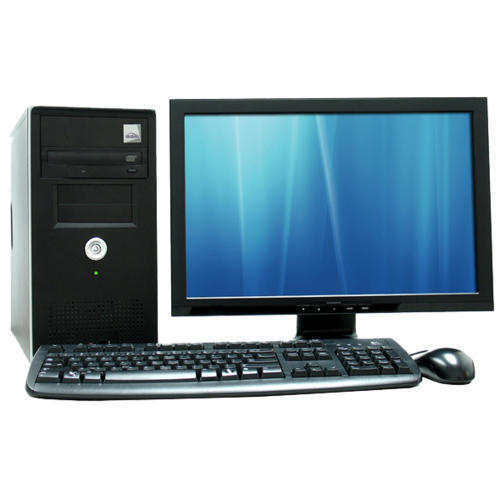Introduction to Computer Networks
Data
Communication:
When we communicate we are sharing information. This sharing can be local or remote. Between individuals, local communication usually occurs face to face, while remote communication takes place over distance.
When we communicate we are sharing information. This sharing can be local or remote. Between individuals, local communication usually occurs face to face, while remote communication takes place over distance.
Components:
A data communications system has
five components.
1. Message. The message is the
information (data) to be communicated. Popular forms of information include
text, numbers, pictures, audio, and video.
2. Sender. The sender is the device
that sends the data message. It can be a computer, workstation, telephone
handset, video camera, and so on.
3. Receiver. The receiver is the device
that receives the message. It can be a computer, workstation, telephone
handset, television, and so on.
4. Transmission medium. The
transmission medium is the physical path by which a message travels from sender
to receiver. Some examples of transmission media include twisted-pair wire,
coaxial cable, fiber-optic cable, and radio waves.
5. Protocol. A protocol is a set of
rules that govern data communications. It represents an agreement between the
communicating devices. Without a protocol, two devices may be connected but not
communicating, just as a person speaking French cannot be understood by a
person who speaks only Japanese.
Data Representation:
Information today comes in different
forms such as text, numbers, images, audio, and video.
Text:
In
data communications, text is represented as a bit pattern, a sequence of bits
(Os or Is). Different sets of bit patterns have been designed to represent text
symbols. Each set is called a code, and the process of representing symbols is
called coding. Today, the prevalent coding system is called Unicode, which uses
32 bits to represent a symbol or character used in any language in the world.
The American Standard Code for Information Interchange (ASCII), developed some
decades ago in the United States, now constitutes the first 127 characters in Unicode
and is also referred to as Basic Latin.
Numbers:
Numbers
are also represented by bit patterns. However, a code such as ASCII is not used
to represent numbers; the number is directly converted to a binary number to
simplify mathematical operations. Appendix B discusses several different
numbering systems.
Images:
Images
are also represented by bit patterns. In its simplest form, an image is
composed of a matrix of pixels (picture elements), where each pixel is a small
dot. The size of the pixel depends on the resolution. For example, an
image can be divided into 1000 pixels or 10,000 pixels. In the second case,
there is a better representation of the image (better resolution), but more
memory is needed to store the image. After an image is divided into pixels,
each pixel is assigned a bit pattern. The size and the value of the pattern
depend on the image. For an image made of only blackand- white dots (e.g., a
chessboard), a I-bit pattern is enough to represent a pixel. If an image is not
made of pure white and pure black pixels, you can increase the size of the bit pattern
to include gray scale. For example, to show four levels of gray scale, you can
use 2-bit patterns. A black pixel can be represented by 00, a dark gray pixel
by 01, a light gray pixel by 10, and a white pixel by 11. There are several
methods to represent color images. One method is called RGB, so called because
each color is made of a combination of three primary colors: red, green,
and blue. The intensity of each color is measured, and a bit pattern is
assigned to it. Another method is called YCM, in which a color is made
of a combination of three other primary colors: yellow, cyan, and magenta.
Audio:
Audio
refers to the recording or broadcasting of sound or music. Audio is by nature
different from text, numbers, or images. It is continuous, not discrete. Even
when we use a microphone to change voice or music to an electric signal, we
create a continuous signal. In Chapters 4 and 5, we learn how to change sound
or music to a digital or an analog signal.
Video:
Video
refers to the recording or broadcasting of a picture or movie. Video can either
be produced as a continuous entity (e.g., by a TV camera), or it can be a
combination of images, each a discrete entity, arranged to convey the idea of
motion. Again we can change video to a digital or an analog signal.
Data Flow
Communication
between two devices can be simplex, half-duplex, or full-duplex as shown in
Figure
In
simplex mode, the communication is unidirectional, as on a one-way street. Only
one of the two devices on a link can transmit; the other can only receive (see
Figure a). Keyboards and traditional monitors are examples of simplex devices.
The keyboard can only introduce input; the monitor can only accept output. The
simplex mode can use the entire capacity of the channel to send data in one
direction.
Half-Duplex:
In
half-duplex mode, each station can both transmit and receive, but not at the
same time. When one device is sending, the other can only receive, and vice
versa The half-duplex mode is like a one-lane road with traffic allowed in both
directions.
When cars are
traveling in one direction, cars going the other way must wait. In a
half-duplex transmission, the entire capacity of a channel is taken over by
whichever of the two devices is transmitting at the time. Walkie-talkies and CB
(citizens band) radios are both half-duplex systems.
The half-duplex mode is used in cases where there is no need
for communication in both directions at the same time; the entire capacity of
the channel can be utilized for each direction.
Full-Duplex:
Full-Duplex:
In
full-duplex both stations can transmit and receive simultaneously (see Figure
c). The full-duplex mode is like a tW<D-way street with traffic flowing in
both directions at the same time. In full-duplex mode, si~nals going in one
direction share the capacity of the link: with signals going in the other
din~c~on. This sharing can occur in two ways: Either the link must contain two
physically separate t:nmsmissiIDn paths, one for sending and the other for
receiving; or the capacity of the ch:arillilel is divided between signals
traveling in both directions. One common example of full-duplex communication
is the telephone network. When two people are communicating by a telephone
line, both can talk and listen at the same time. The full-duplex mode is used
when communication in both directions is required all the time. The capacity of
the channel, however, must be divided between the two directions.










0 Comments